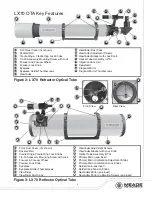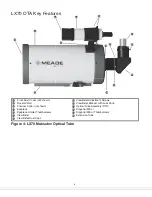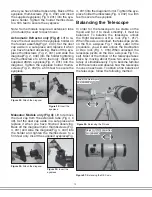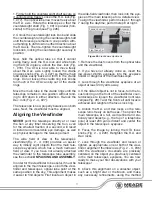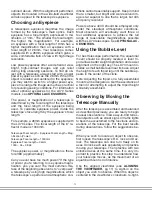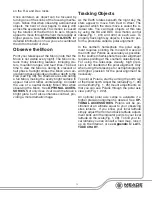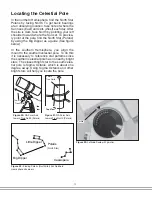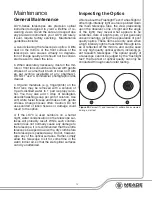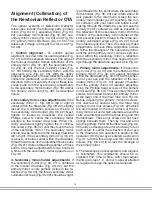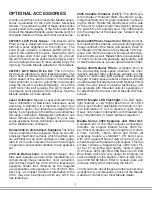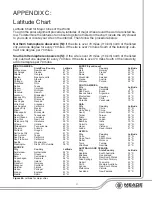
14
14
Pointer
Pointer
Figure 29:
Latitude Scale with pointer
Locating the Celestial Pole
In the northern Hemisphere, find the North Star
Polaris by facing North. To get basic bearings
at an observing location, take note of where the
Sun rises (East) and sets (West) each day. After
the site is dark, face North by pointing your left
shoulder toward where the Sun set. To precise-
ly point at the pole, find the North Star (Polaris)
by using the Big Dipper as a guide (See figure
below).
In the southern Hemisphere, you align the
mount to the southern celestial pole. To do this
it is necessary to reference star patterns since
the southern celestial pole has no nearby bright
stars. The closest bright star to the south celes-
tial pole is Sigma Octanis, which is about one
degree away. Using Sigma Octanis and other
bright stars will help you locate the pole.
Toward
Toward
True North
True North
Figure 30:
RA Polar Axis
toward True North (Polaris)
Figure 31:
RA Polar Axis
toward True North (Polaris)
Polaris
Little Dipper
Big Dipper
Cassiopeia
Figure 32 :
Finding Polaris (North Star) For Northern
Hemisphere observers
Toward
Toward
True North
True North
(North Star)
(North Star)
Top View
Top View
Side
Side
View
View
Summary of Contents for LX70 Series
Page 1: ...1 Instruction Manual LX70 Series German Equatorial Telescopes...
Page 25: ...25 OBSERVATION LOG...
Page 26: ...26 26 OBSERVATION LOG...
Page 27: ...27 OBSERVATION LOG...





